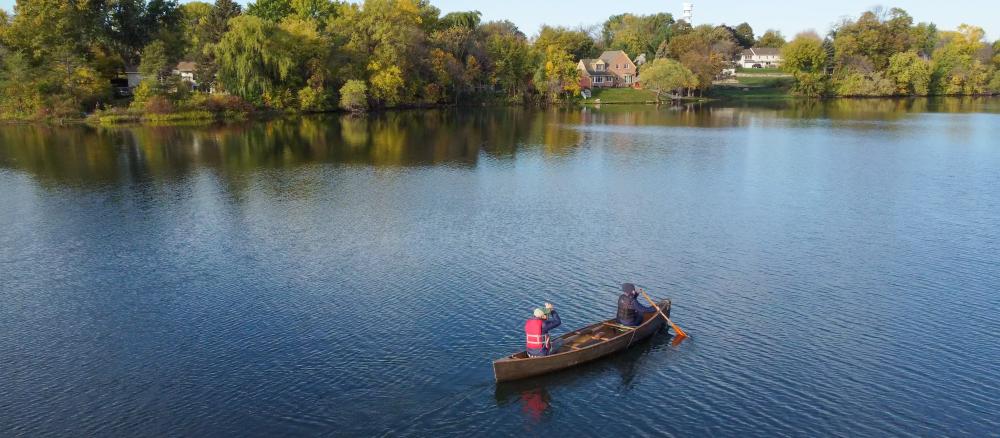Lakes in the Twin Cities are mostly surrounded by developed land and may receive runoff from surrounding storm sewers, which can harm water quality. High levels of phosphorus pollution fuel algae growth, which can make lakes less attractive for swimming and other recreation. So it's not surprising that many metro-area lakes and rivers are on the state Impaired Waters List, a collection of water bodies that don't meet water-quality standards. But it’s not all bad news.
Sustained efforts by cities and water management organizations have restored water quality in two Dakota County lakes. The MPCA is proposing to remove Sunfish and LeMay lakes from the Impaired Waters List this year — a decision that should inspire renewed water protection and restoration efforts.
Sunfish Lake
In 2010, an MPCA review of water monitoring data revealed high levels of phosphorus in Sunfish Lake, at 49 parts per billon (ppb); the standard is 40 ppb for lakes of this depth. High levels of phosphorus fuel algae growth, which not only affects recreation but also has negative impacts on fish and other aquatic plants.
A 2012 study by the Lower Mississippi River Watershed Management Organization (LMRWMO) called for alum treatment as a way to reduce phosphorus in the water. When applied to water, alum forms a fluffy aluminum hydroxide precipitate called a floc. As the floc settles to the bottom, it removes phosphorus and particulates (including algae). The floc settles on the lake-bottom sediment where it forms a layer that acts as barrier to phosphorus, which is then no longer available to fuel algae growth. The organization was able to secure a Clean Water Fund grant to implement the project and shore-owners provided the matching funds, which amounted to more than $27,000.
LMRWMO applied the alum treatment in the spring of 2017. In the following seasons, Sunfish Lake became clearer as algae growth dissipated. Water quality testing revealed the lake was meeting state water-quality standards at 17 ppb.
“The improvement was nearly immediate, and residents are very happy with the results,” says Joe Barten, LMRWMO Administrator. “It’s a great example of the impact that thorough watershed planning can have on local lakes.”
LeMay Lake
A 2013 MPCA review of water-quality data for LeMay Lake in Eagan showed phosphorus at 84 ppb; the standard for lakes of this type is 60 ppb. With funding from a three-year Clean Water Fund grant, the city identified significant phosphorus sources from stormwater runoff and lake sediment. The report also identified possible infrastructure projects to address the stormwater contamination.
The city applied alum in the fall of 2015 to target the phosphorus already in lake sediment. Addressing stormwater runoff was much more challenging and expensive. Though water quality in LeMay was already improving from the alum treatment, the city expanded a treatment basin and installed an iron-sand filtration system in 2019. It also installed a large underground stormwater infiltration system in 2021. The City of Eagan stepped up with funding from its stormwater utility. The efforts have been successful; phosphorus levels in the lake are at 27 ppb.
“The city established one of the first comprehensive stormwater/water quality plans in the state of Minnesota in 1990,” says Eric Macbeth, Eagan's Water Resources Manager. “Around the same time, the city instituted a stormwater utility fee to pay for programs related to the plan.”
Beyond just the LeMay Lake study and plan, Eagan’s stormwater utility fee, implemented over 30 years ago, has supported many water-quality projects in the area. “Eagan has a strong cultural commitment to water quality and these kinds of improvements,” Macbeth says. “Our city council has authorized projects to occur even though most of our lakes meet water quality standards because, to paraphrase one of our council members, it’s the right thing to do.”
